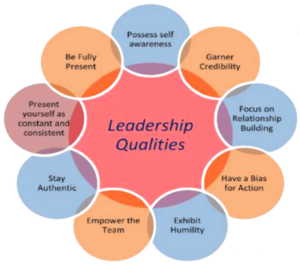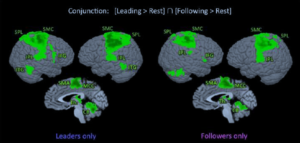Research Objectives:
Highlight the essential role of empathy and compassion as core leadership competencies for women. Explore the profound impact of emotional and social intelligence in fostering inclusive and supportive work cultures.
Keywords:
Women Leaders, Neuroscience, Broken Rung, Leadership Strategies, Empathy in Leadership
Bio
Martha Davidson is the founder of Mpowering Minds Now where her mission is to empower corporate leaders use Neuroscience leadership practices and inspire midlevel managers specifically in the STEM profession to accelerate their desire to own a seat in the executive suite utilising neuroscientific leadership strategies. Currently less 5 % of African American Women in STEM rise to senior leadership and less than 25% of women in technology over-all are in leadership positions. She is Certified in Neuroscience Coaching and Leadership specialising in Unconscious Bias, Corporate Leadership Consultancy. She is an International Speaker and Author that is passionate in empowering others to amplify their purpose and superpowers with the brain in mind. She has over twenty-five years in Cybersecurity as a global leader and influencer for Fortune 100 companies in United States, the Royal Bank of Scotland and BCD Travel. Her mission is to empower 100,000 women to Empower Women in technology professions to thrive by 2024. She is a Google Women Tech maker Global Ambassador and DEI advocate Truist Women In Tech.
Abstract
This research aims to delve into the significant role that neuroscience plays in amplifying women’s leadership abilities. Particularly in overcoming the ‘broken rung’ challenge – a metaphor for the obstacles that impede women’s rise to leadership positions. There is an integration of neuroscientific principles with practical leadership strategies, focusing on the vital roles of empathy, social, and emotional intelligence in the intricate landscape of our post-pandemic work environment. Through foundational works “Women and Leadership: A Neuro-Social Point of View” by Hiebert, B. (2015), “The Neuroscience of Female Leadership” by Mary Ovenstone, and Dr. Daniel Amen’s, insights into the natural leadership talents of women are investigated.
The primary aim of this research is to highlight the essential role of empathy and compassion as key leadership competencies. Exploring the profound impact of emotional and social intelligence in creating inclusive and supportive workplace cultures. Additionally, examining the necessity for adaptable leadership styles in response to the dynamic shifts in workplace interactions post-pandemic. Through this research, a holistic, brain-based approach to leadership is highlighted, an approach crucial for the advancement of women in leadership roles. A comprehensive framework for organisations looking to develop empathetic, emotionally intelligent leadership styles, capable of navigating the complexities of the modern workplace will be provided. This strategy is pivotal in dismantling the ‘broken rung’, ensuring women leaders are not only prepared to excel but also to succeed at every stage of their career. By merging neuroscience with leadership strategies, there is an endeavour to mark a significant paradigm shift.

Figure 1 (Thakur, 2023)
1.0 Introduction
Leadership within the world is undergoing a seismic shift (Whyte, et al., 2022). The post-pandemic world demands a new breed of leaders, those who are adept at directing remote teams, fostering resilience, and prioritising employee well-being (Somani, 2021). The leadership land- scape pre-pandemic often resembled a command centre. Leaders were heralded for their decisiveness, strategic thinking, and ability to steer the ship with a firm hand. They were expected to make clear pronouncements, dele- gate tasks efficiently, and prioritise individual achievement (Webb, 2024). Charismatic leaders who could inspire and motivate with unwavering confidence were particularly admired. However, the global pandemic turned this model on its head. Remote work- forces, team restructuring, and heightened employee well-being concerns demanded a different kind of leader.
Empathy, adaptability, and emotional intelligence became the new hallmarks of effective leadership (Wells, 2024). The ability to foster collaboration, navigate complex team dynamics, and prioritise the psychological well-being of employees became mission critical. This shift in leadership demands opened the door for a re-evaluation of women’s strengths and their natural aptitude for the very skills the new era requires. While Leadership Quality comprises numerous components, figure 1 illustrates nine crucial elements emerge as indispensable for its development.
Figure 1 (Thakur, 2023). This research explores a ground-breaking idea: that the leadership qualities most needed today may have a biological basis, particularly for women. Imagine a leader with a heightened capacity for understanding others’ emotions, a key feature of the brain regions associated with empathy in women. Such a leader can foster trust, build strong relationships, and navigate complex team dynamics. Social intelligence, another strength often linked to women’s neurological makeup, allows for effective collaboration and communication, crucial for harnessing the collective wisdom of a diverse workforce. Finally, emotional intelligence equips leaders to manage not only their own emotions but also those of their teams, fostering a positive and supportive work environment, a cornerstone of employee well-being and productivity.
A vast body of research underscores the unique leadership strengths women possess. Existing literature suggests women tend to exhibit higher levels of empathy, collaboration, and emotional intelligence compared to their male counterparts (Kitsios, Papageorgiou, Kamariotou, Perifanis, & Talias, 2022). Hiebert (2015), in her work “Women and Leadership: A Neuro-Social Point of View,” emphasizes the neurobiological basis for these strengths (Hiebert, 2015). She highlights the heightened activity in brain regions associated with empathy and emotional processing observed in women. Similarly, Oven stone (2018) explores the biological underpinnings of women’s leadership styles in “The Neuroscience of Female Leader- ship,” emphasising their natural capacity for collaboration and relationship-building (Oven stone, 2015). Dr. Daniel Amen’s insights further contribute to this understanding, illuminating the neurological foundations of these leadership qualities (Amen, 2023).
However, despite these strengths, women remain underrepresented in leadership roles.
Aim
This research has several key objectives. Firstly, it aims to highlight the essential role of empathy and compassion as core leadership competencies for women. Secondly, it seeks to explore the profound impact of emotional and social intelligence in fostering inclusive and supportive work cultures.
Furthermore, the research examines the necessity for adaptable leadership styles in response to the dynamic shifts in workplace interactions post-pandemic. Ultimately, this research strives to develop a holistic, brain-based framework for organisations to cultivate empathetic and emotionally intelligent leadership styles. This framework is intended to be a pivotal tool in dismantling the “broken rung” by ensuring women leaders are not only prepared to excel but also thrive at every stage of their careers.
2.0 Method
This research employed a multifaceted methodological approach. First, a comprehensive literature review was conducted, analysing foundational works on the neurobiology of leadership, particularly those focusing on empathy, social intelligence, and emotional intelligence. Works by Hiebert (2015), Oven stone (2015), and Dr. Amen (2023) were central to this review, alongside other relevant academic sources. Secondly, the research integrated these neuroscientific principles with established leadership development concepts. This involved analysing how these principles could be applied to understand and enhance the leadership potential of women. Finally, based on these findings, a practical framework for organisations was developed. This framework outlined strategies and tools that organisations could utilise to cultivate empathetic and emotionally intelligent leadership styles within their workforce, fostering a more inclusive and supportive work environment.
3. Results and Discussion
3.1 Unveiling the Neurobiological Connection: Women and Leadership Strengths
The comprehensive literature review yielded a wealth of in- formation, unveiling a fascinating link between neuroscience and women’s leadership potential. Works by Hiebert (2015), Oven stone (2015), and Dr. Amen (2023) provided compelling evidence for the biological underpinnings of leadership behaviours. They focused on empathy, social intelligence, and emotional intelligence – strengths frequently attributed to women leaders. This research delves deeper, exploring the exciting possibility that these leadership qualities may have a foundation in the very structure and function of the female brain.
Neuroscience of Empathy and Emotional Intelligence:
Hiebert’s (2015) work stands out in this regard. Her research highlights how brain regions associated with empathy and emotional processing, such as the anterior cingulate cortex and the insula, show heightened activity in women. These areas play a crucial role in understanding and responding to the emotions of others, a vital skill for fostering strong relationships and building trust within teams – qualities essential for effective leadership.
The Neural Basis of Collaboration:
Ovenstone (2015) sheds light on the biological underpinnings of women’s leadership styles, emphasising their natural capacity for collaboration and relationship-building. This strength may be linked stronger connectivity observed in women between the prefrontal cortex and the limbic system (Foo & Freedle, 2024). These brain regions are involved in planning, decision-making, and emotional regulation, suggesting a neurological basis for women’s ability to integrate diverse perspectives and foster a collaborative work environment.
Dr. Amen’s Contribution:
Dr. Amen’s work (2015) on brain imaging (Amen Clinics, 2024) further contributes to this understanding by illuminating the neurological foundations of leadership qualities. He identifies specific brain regions associated with traits like decisiveness, risk-taking, and social adeptness, all crucial for effective leadership. While his research does not differentiate between genders, it provides valuable insights into the biological underpinnings of leadership behaviours in general.
Figure 2 depicts a Shared network for leading and following. In a study involving a group of participants, the brain regions associated with leadership in the entire cohort tended to correlate with proficiency in leading, while regions related to following tended to correlate with proficiency in following. Another interpretation of these findings is that adept leaders scarcely utilized additional brain areas during following that were not already activated during leading; similarly, adept followers hardly activated any areas during leading that were not already engaged during following.

Figure 2 (Chauvigné & Brown, 2018)
Aligning with Post-Pandemic Needs:
The alignment between these neuroscientific findings and the increasingly sought-after leadership skills in the post-pandemic world (Eichenauer, Ryan, & Alanis, 2022) is particularly striking. Adaptability, empathy, and emotional intelligence are crucial for navigating the complexities of a rapidly changing work environment. Remote workforces, team restructuring, and heightened employee well-being concerns necessitate leaders who can foster trust, build strong relationships, and make sound decisions with a human touch. Women, with their natural neurological predispositions towards these very skills, are well-positioned to excel in leadership roles and contribute significantly to the success of organisations in the post-pandemic era.
3.2 Empowering Women Leaders:
By understanding the biological basis of behaviours like empathy, social intelligence, and emotional intelligence, women can leverage these inherent strengths in a targeted manner. This self-awareness becomes a powerful tool for professional development (Yadav, 2022). Research has found that women leaders can translate this knowledge into action through the following:
Building Confidence:
Understanding the neurological basis of their strengths can bolster confidence in women leaders. The knowledge that their natural tendencies align with sought-after leadership skills can be a powerful motivator. This newfound confidence can empower them to take on new challenges and assert their leadership vision.
Targeted Development:
By pinpointing specific strengths, women can develop targeted strategies for honing their leadership skills. For instance, a leader with a strong neurological foundation for empathy might focus on developing active listening skills or conflict resolution strategies that leverage their natural ability to understand others’ perspectives.
Communication Strategies:
Understanding the neural basis of communication can help women leaders develop communication styles that resonate with their teams. Focusing on clear, empathetic communication that fosters trust and collaboration can be particularly effective.
Fostering Collaboration:
Women’s natural capacity for relationship-building, supported by their neurological predisposition for social intelligence, can be leveraged to cultivate a collaborative work environment.
By fostering open communication and encouraging team participation, women leaders can create a space where diverse perspectives are valued and collective problem solving thrives.
Navigating the “Broken Rung”:
Understanding the biological underpinnings of leadership strengths can equip women leaders to navigate the “broken rung” challenge. They can leverage their strengths in networking and building supportive relationships to overcome systemic barriers and secure opportunities for advancement.
By actively utilising this new- found self-awareness, women leaders can not only excel in their roles but also pave the way for future generations by dismantling the “broken rung” and creating a more equitable leadership landscape.
3.3 Fostering Inclusion
For organisations, fostering a culture that empowers women leaders necessitates a two-pronged approach: dismantling systemic barriers and creating opportunities for them to thrive (Smith & Sinkford, 2022). The framework developed through this research offers practical tools to achieve this. By integrating these strategies into leadership development programs and organisational practices, companies can cultivate empathetic and emotionally intelligent leadership styles across the workforce, fostering a more inclusive and productive work environment.
The Framework in Action:
The framework outlines several key strategies that organisations can implement:
Leadership Development Programs:
Revamp leadership development programs to emphasise the value of empathy, social intelligence, and emotional intelligence. This could involve workshops on active listening, communication styles that build trust, and emotional regulation techniques.
Mentorship Opportunities:
Foster mentorship opportunities specifically for women leaders. Pairing them with experienced mentors, regardless of gender, can provide guidance, support, and access to valuable networks.
Work-Life Balance Initiatives:
Implement work-life balance initiatives that recognise the unique challenges often faced by working women. This might include flexible work arrangements, childcare support resources, and parental leave policies that are equitable for all genders.
Unconscious Bias Training:
Educate all employees on unconscious bias and its impact on promotion practices. Creating a culture of awareness allows for fairer evaluation processes and removes invisible barriers hindering women’s advancement.
Sponsorship Programs:
Develop sponsorship programs that connect high-potential women leaders with senior executives who can champion their careers and advocate for their advancement.
Performance Reviews:
Revise performance review processes to incorporate metrics that capture the value of strengths associated with women’s leadership styles, such as collaboration, team building, and emotional intelligence.
Benefits of an Inclusive Environment:
By implementing these strategies, organisations can cultivate a more inclusive work environment. This benefits not only women leaders but also the entire workforce. It can foster Enhanced Employee Engagement; when employees feel valued, respected, and heard, their engagement and morale improve, leading to increased productivity and innovation (Mazzetti & Schaufeli, 2022). Talent Acquisition and Retention; a diverse and inclusive workplace attracts and retains top talent, regardless of gender.
There is improved Decision-Making:
Leadership teams with diverse perspectives and strengths are better equipped to make well-rounded decisions. Positive Brand Image; companies that champion gender equality create a positive brand image and attract a wider pool of talent and customers. The framework presented here is a starting point. Organisations can adapt and expand upon these strategies to create a customised approach that fosters a culture where women leaders can thrive. By dismantling the “broken rung” and creating a truly inclusive environment, organisations unlock the full potential of their diverse workforce, leading to a more successful and sustainable future.
4.0 Conclusion
This research has shed light on the transformative potential of neuroscience in amplifying women’s leadership potential. By unveiling the neurobiological underpinnings of leadership behaviours associated with empathy, social intelligence, and emotional intelligence, strengths that are often attributed to women. This research has made a compelling case for their natural aptitude for leader- ship roles. This understanding is particularly relevant in the ever-evolving post-pandemic landscape, where these very skills are increasingly sought after for navigating complex challenges and fostering team resilience. The discussion around these findings has centred on two crucial aspects: empowering women leaders and fostering a more inclusive work environment. By understanding the biological basis of their strengths, women can leverage them to navigate the complexities of leadership and dismantle the persistent “broken rung” challenge that hinders their advancement (Mountrouidou, et al., 2019). The framework developed within this research offers practical tools for organisations to cultivate empathetic and emotionally intelligent leadership across the workforce. Implementing these strategies can create a truly inclusive environment where all employees, regardless of gender, feel valued, respected, and empowered to reach their full potential.
However, this research is not merely an exploration; it is a springboard for a more equitable future. By promoting a deeper understanding of women’s leadership strengths informed by neuroscience, we can dismantle the unconscious biases that have long impeded their progress. This future envisions women not only excelling in leadership roles but also inspiring and paving the way for the next generation of female leaders. The time has come to move beyond rhetoric and harness the full potential of a diverse workforce.
By empowering women leaders, organisations can unlock a new era of success and innovation. This research provides a roadmap for achieving this transformation. It is a call to action for both women and organisations. Women leaders can leverage the knowledge of their inherent strengths to advocate for themselves, build supportive networks, and inspire others. Organisations must commit to dismantling systemic barriers, fostering a culture of inclusion, and implementing the framework outlined here.
The benefits extend far beyond individual successes, a diverse leadership landscape fosters a culture of collaboration, innovation, and better decision making. It unlocks the talents of the entire workforce, leading to increased productivity and a more positive work environment for all. Ultimately, by embracing the transformative potential of women’s leadership, organisations and societies alike can pave the way for a more successful and sustainable future.
Recommendations
Building upon the insights gleaned from this research, the following recommendations are offered to further empower women leaders and foster a more inclusive work environment:
For Women Leaders:
Self-Awareness & Continuous Learning:
Women leaders are encouraged to actively engage in self-awareness exercises to further understand their natural leadership strengths, particularly those rooted in empathy, social intelligence, and emotional intelligence. This knowledge can be leveraged to develop targeted leadership development plans, honing existing skills and acquiring new ones through ongoing professional development opportunities.
Building Networks & Mentor- ship: Intentionally fostering strong professional networks and pursuing mentorship opportunities with experienced leaders, regardless of gender, can provide invaluable support, guidance, and access to valuable resources.
Advocacy & Visibility: Women leaders should leverage their voices to advocate for themselves and other women within the organisation. This can involve promoting initiatives that champion gender equality and acting as role models for aspiring women leaders.
For Organisations:
Leadership Development Revision: Review and revise leadership development programs to emphasise and cultivate the value of empathy, social intelligence, and emotional intelligence. This can be achieved through workshops focusing on active listening, communication styles that build trust, and emotional regulation techniques.
Data-Driven Initiatives: Gather and analyse data related to employee advancement and leadership positions to identify potential biases and areas where women may be underrepresented. Utilise this data to inform the development of targeted initiatives that promote gender equality.
Accountability & Transparency: Develop clear metrics that assess leadership effectiveness, taking into account the full range of leadership strengths, including those associated with women’s leadership styles. This promotes transparency and ensures fairness in promotion and advancement opportunities.
Diversity & Inclusion Champions: Identify and empower diversity and inclusion champions within the organisation who can advocate for change and ensure the successful implementation of initiatives aimed at fostering a more inclusive work environment.
References
Amen, D. (2023). Unleashing The Power Of The Female Brain. Amen Clinics.
Chauvigné, L. A., & Brown, S. (2018). Role-Specific Brain Activations in Leaders and Fol- lowers During Joint Action. Front. Hum. Neurosci.
Eichenauer, C. J., Ryan, A. M., & Alanis, J. M. (2022). Leadership During Crisis: An Examination of Supervisory Leadership Behavior and Gender During COVID-19. J Leadersh Organ Stud.
Foo, M., & Freedle, L. R. (2024). The effects of sandplay therapy on the limbic system and prefrontal cortex in women with generalised anxiety dis- order. The Arts in Psychotherapy.
Hiebert, B. (2015). Women and Leadership: A Neuro-Social Point of View. In P. Kumar, Unveiling Women’s Leadership (pp. 3-12). London: Palgrave Macmillan.
Kitsios, F., Papageorgiou, E., Kamariotou, M., Perifanis, N. A., &Talias,M.A.(2022). Emotional intelligence with the gender perspective in health organizations managers. Heliyon.
Mazzetti, G., & Schaufeli, W. B. (2022). The impact of engaging leadership on employee engagement and team effectiveness: A longitudinal, multilevel study on the mediating role of personal and team resources. PLoS One.
Mountrouidou, X., Vosen, D., Kari, C., Azhar, M., Bhatia, S., Gagne, G., . . . Yuen, T. (2019). Securing the Human: A Review of Literature on Broadening Diversity in Cybersecurity Education. Innovation and Technology in Computer Science Education, 157-176.
Ovenstone, M. (2015). The Neuroscience of Female Leadership. LinkedIn.
Smith, S. D., & Sinkford, J. C. (2022). Gender equality in the 21st century: Overcoming barriers to women’s leadership in global health. Jounal of Dental Education.
Somani, P. (2021). Improving Leadership Skill Styles And Techniques In The 21st Century Post COVID-19. Journal of Woman Health, Safety and Empowerment.
Thakur,A.(2023,0501). 9 Leadership Qualities. Retrieved from protouchpro: https://www.protouchpro.com/ guest-posts/9-leadership-qualities/
Webb, A. (2024, 01 12). Bringing True Strategic Foresight Back to Business. Retrieved from Harvard Business Review: https://hbr.org/2024/01/bringing-true-strategic-foresight-back-to-business
Wells, R. (2024, 01 05). Emotional Intelligence No.1 Leadership Skill For 2024, Says Research. Retrieved from Forbes: https://www.forbes.com/sites/rachelwells/2024/01/05/emotional-intelligence-no1-leadership-skill-for-2024-says-research/
Whyte, J., Naderpajouh, N., Clegg, S., Matous, P., Pollack, J., & Crawford, L. (2022). Project leadership: A research agenda for a changing world. Project Leadership and Society.
Yadav, S. (2022). Reflective Journals: A tool for Self-Reflection, Self-Awareness and Professional Development. Journal, Educational Resurgence.



